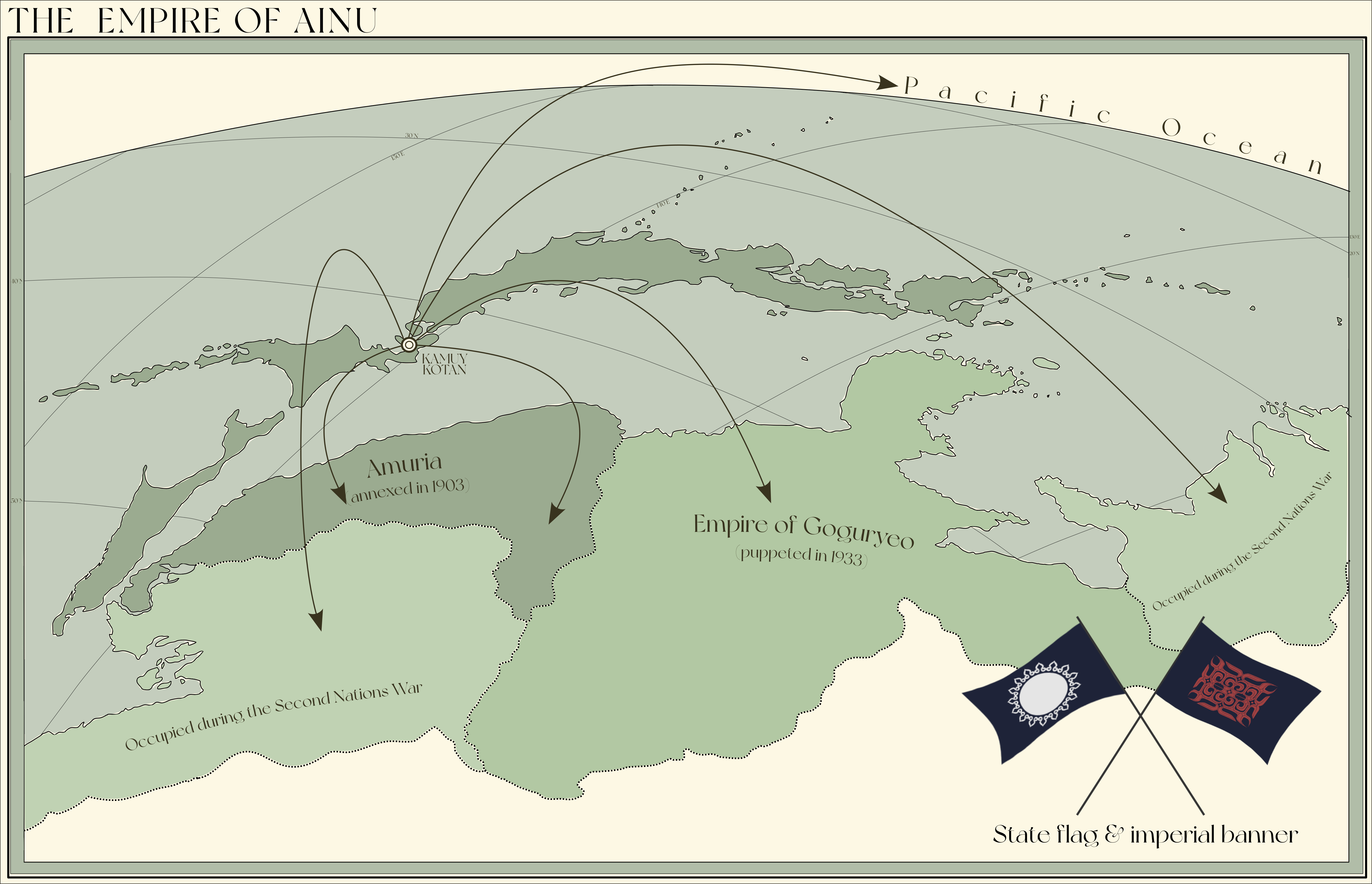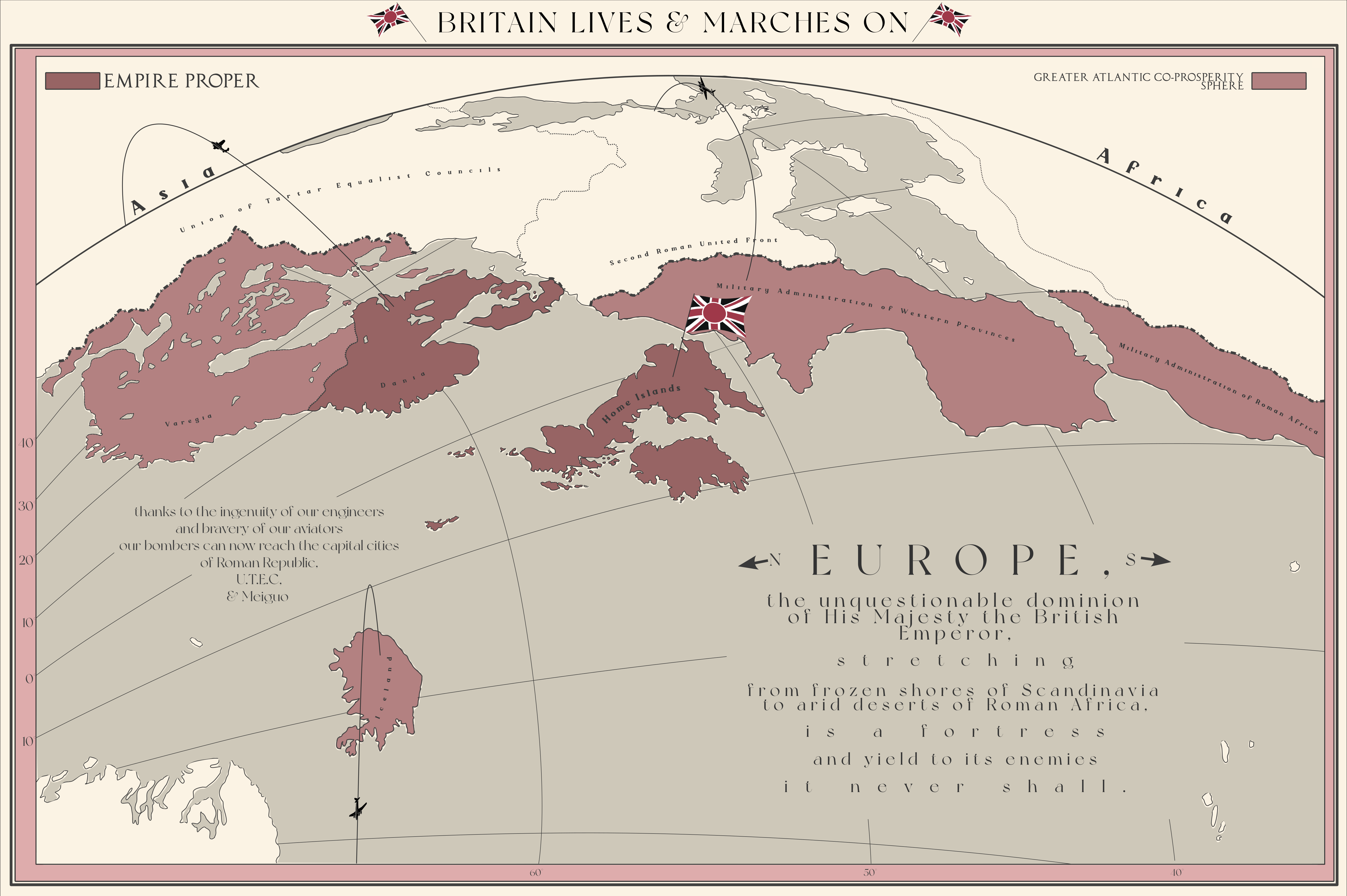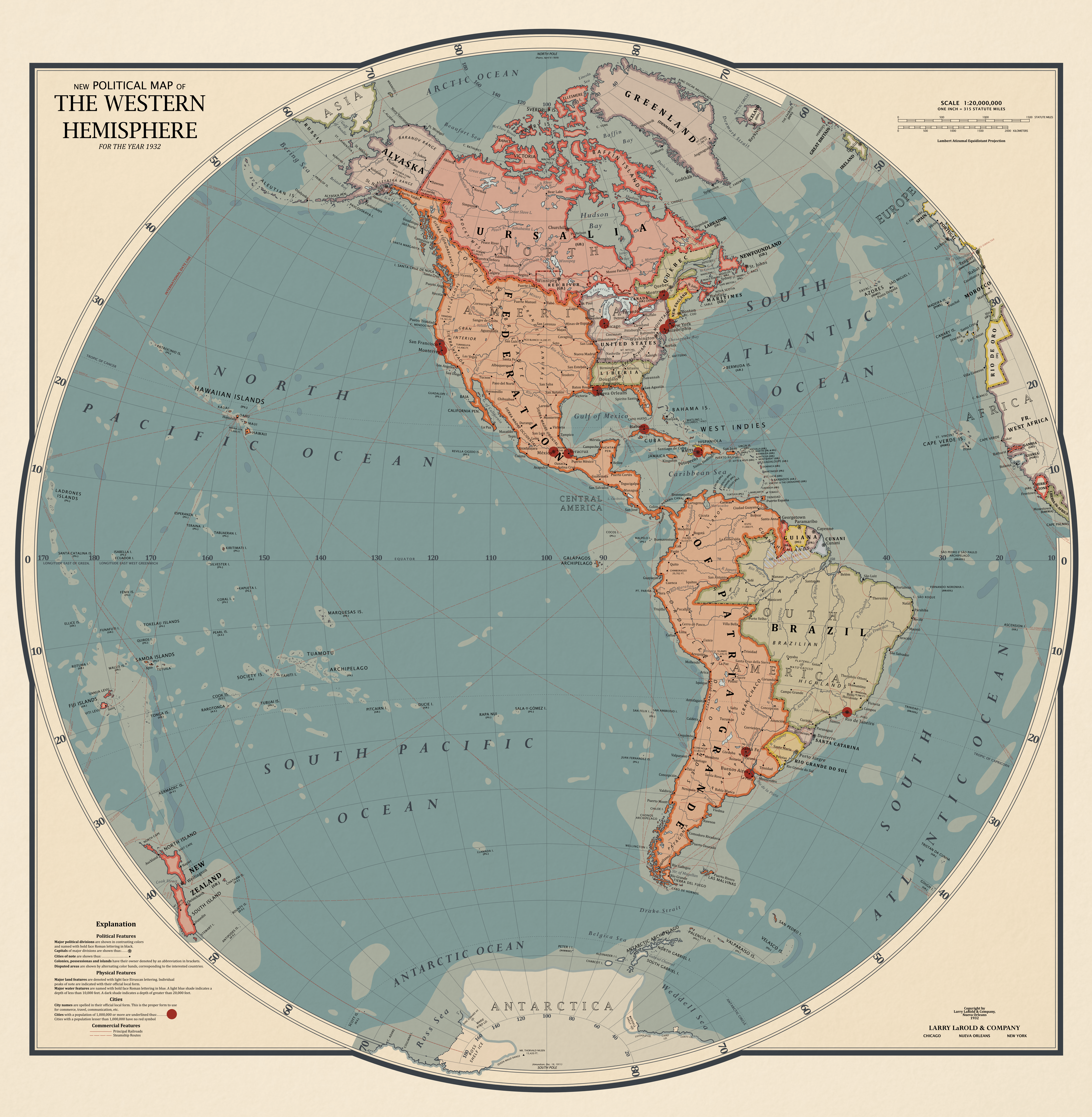In this timeline, East and West swap places, with Roman Empire avoiding dissolution and China never unifying after the fall of Qin. Consequently, constant rivalry between the warring Chinese states leads them to political and technological progress, whereas Europe lags behind, staggering under the weight of imperial bureaucracy. The Roman empire goes through a cycle of civil wars and dynastic changes, much like China did in our timeline. During one of these upheavals Britain emancipates itself from Roman administration and becomes its own feudal kingdom. Meanwhile the Chinese kingdoms, most notably Han and Chu, develop their own identities and eventually become nation states.
Fast forward two thousand years, and the world is in the midst of a Second World War (called the Second All-Heavens War in this timeline). On the one side there are the Axis powers of Han, Yan and Britain; on the other, the allies: Chu, Nippon, Meiguo (Chu’s former colony), Union of Tartar Equalist Councils (a socialist republic established after the fall of the Great Khanate in the First All-Heavens War) and the United Roman Front (a temporary coalition of warring factions, among them the Spartikist Revolutionary Party and the Nationalist Party). United Roman Front puts up a desperate defense against the British invaders, at one point blowing up dikes on the river Rhenus in order to stop their advance. The British, on the other hand, commit acts of unbelievable cruelty against the Romans, whom they consider as inferior people.
The map is a British propaganda poster, aimed at boosting morale of British troops in the ending stages of the war. In fact, at this point war was all but lost for them. War in Asia was coming to an end, with Tartar forces closing in on Han’s capital, Luoyang, and Meiguan nuclear programme being weeks away from developing a new weapon of unseen potential.
--------------------------------------------------------------------------------------------------------------------------------------------------------------------------------------------------------------------
In this timeline, West and East swap places, with Roman Empire collapsing and Qin China avoiding dissolution. Consequently, constant rivalry between the warring European states leads them to political and technological progress, whereas China lags behind, staggering under the weight of imperial bureaucracy. The Chinese Empire goes through a cycle of civil wars and dynastic changes, much like Rome did in our timeline. During one of these upheavals Nippon emancipates itself from Qin administration and becomes its own feudal kingdom, unified by the Northern warrior people of Ainu [1]. Meanwhile the European kingdoms, most notably Gallia and Brittland, develop their own identities and eventually become nation states.
Fast forward two thousand years, and the world is in the midst of a Second All-Heavens War (called the Second Nations War in this timeline). On the one side there are the Axis powers of the III Gaelic Tuath, Etruscia and Ainu; on the other, the allies: Vandalia, Anglia, United Provinces of Brasil (Britland’s former colony), Oikumene of Scythian Izarchates (a socialist republic established after the fall of the Scythian Atamanate in the First Nations War) and the United Chinese Front (a temporary coalition of warring factions, among them the Izarchist Revolutionary Party and the Nationalist Party). United Chinese Front puts up a desperate defense against the Ainu invaders, at one point blowing up dikes on the Yellow river in order to stop their advance. The Ainu, on the other hand, commit acts of unbelievable cruelty against the Chinese, whom they consider as inferior people.
The map depicts Ainu territorial expansion in the decades leading up to the Second Nations War and its conquests in said war.
The dates on the map are using the Christian calendar, as I imagine it would be the most widely used in this West-dominated world.
[1] I chose Ainu to be the rulers of Nippon, because I think that the Japanese who developed the first parliamentary institutions in our timeline, would be incapable of waging such brutal wars of conquest in Asia as Britons did in Europe.







